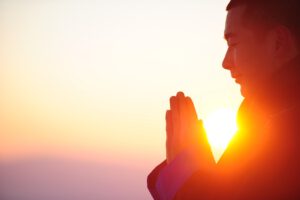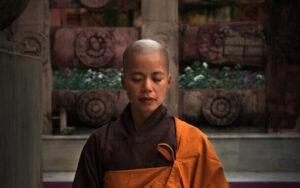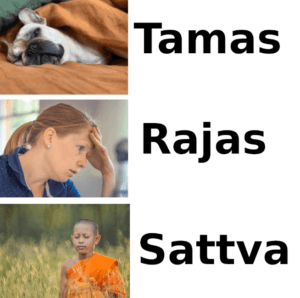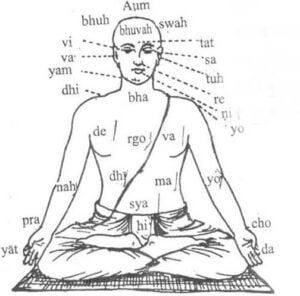Mantra meaning Mantra meaning or the meaning of a mantra can be found in many different cultures…
Mantra
Mantra

OM Mantra
Mantra is the main tool of classical yoga. All yogic paths of knowledge and devotion use mantras and have their own special mantras. Yoga practice begins with the mantra that creates the alignment of the mind necessary for yoga practice. Mantras are the key principles behind all yoga practices. This is due to their ultimate power to permeate and influence all areas of yoga – body, prana and mind.
Mantra as an expression of the “I”
Our language is the most important ability that defines and expresses our nature as human beings. This universal power of language is above all an expression of self-existence and personality. The expression of the self is the first of all expressions. Language is the expression of consciousness. Mantras are the perfection of language through the expression of beauty and efficiency in support of spiritual practice.

Mantra consists of prana and speech
According to Vedic thought, there are two fundamental forces in the universe that are the basis of all life. These are prana (life energy), which we experience primarily through the breath, and language or expression in the broadest sense of the word. Language includes form and sound.
Prana and language are interwoven. They always move together. Prana is the energy behind speech that moves through the breath. Speech is the form or boundary that prana or the breath takes. Speech is prana in action. Prana is the essence of speech that conveys our life energy, its intentions and its information. It is mostly not just about what we say but how we say it – what our intention is behind the words.
Mantra as an asana for the mind
Mantras are like asanas for the mind. They give the mind plasticity and adaptability. They train its energy and give it balance and stability. As such, mantra yoga is primarily part of pratyahara, the fifth stage of yoga. Just as asana controls the body and pranayama controls the breath, mantra controls the mind. Mantra maintains the strength and integrity of our mental field and ensures the proper circulation of energies in the sphere of the mind so that we are no longer susceptible to external conditioning. It thus acts as a shield against negative vibrations that can unbalance our mind.

Just as asanas put the body in a calm and relaxed state for meditation, mantras put the mind in a calm and relaxed state for meditation. For example, the repetition of the mantra OM has the same calming and uplifting effect on the mind and heart as the lotus position has on the body and breath.
However, directing our speech and thinking in a spiritual direction is more significant than just gaining agility or flexibility of the body. Since speech is the most subtle and important of our organs of movement, by controlling it we can control all our organs of action and thus gain mastery over the senses. Since mental language, our inner dialog, is the root of thought, controlling it enables us to control the mind itself. In yoga, we move from the inside to the outside. The body arises from the mind and therefore the mind is the ruler of this physical world. With a mantra we bring the mind under control.
Mantra and meditation
Mantra is the basis for the practice of meditation. Meditation in the true sense consists of higher levels of mantra in which the mind is in a silent, concentrated and reflective state. Mantra supports meditation by changing the vibrational pattern of the subconscious and bringing the mind to a sattvic level. Formless meditation is difficult to achieve directly, but becomes easy when the power of mantra is used as the basis of meditation practice.
Mantra meditation technique
As soon as the mind is concentrated on the mantra, it can go into silence. For this purpose of concentrating the mind on one thought, mantra is perhaps the most practical tool. In this respect, mantra acts as a pratyahara, a withdrawal of the mind from distractions, and helps develop true attention, dharana, so that meditation or dhyana can continue without hindrance.
First we need to set in motion forces that bring the mind from its disturbed (rajasic) or dull (tamasic) state to its natural clear quality (sattva). Perhaps the best and simplest method is the mantra. The technique is therefore quite simply to concentrate on a mantra until the mind reaches a sattvic vibration and we can go beyond mantra and mind in meditation.

General and special mantras
There are common mantras such as OM or OM Namah Shivaya that are given to many people and there are few restrictions on their use except that they should be used with trust, respect and devotion. In this respect, a mantra plays an important role in the guru – disciple relationship in the inheritance of an energetic practice to support the disciple in their process.
Mantra therapy in yoga and ayurveda
Mantra therapy is widely used in Ayurveda. It is the main tool of psychological healing and a supportive therapy for physical healing. It is also a key to an appropriate Ayurvedic lifestyle. There are many mantras used in Ayurveda, some specifically for Ayurveda, others an Ayurvedic application of mantras that can be used in various ways.
Bija mantras or core syllables
These are the most important type of mantras for healing. They consist of individual syllables such as OM, letters of the Sanskrit alphabet or special Shakti mantras such as HRĪM. These seed syllables have a wide range of applications in physical and psychological healing as well as spiritual growth. They are a powerful means of energizing prana. The sound of the syllables changes the prana into healing vibrations on a physical and mental level.

Auswirkung Gayatri Mantra auf den Körper
Gayatri Mantra
We take the Gayatri Mantra as an example of the effect of these sounds:
The Gayatri Mantra reads:
“Om Bhur Bhuvaḥ Swaḥ,
Tat Savitur Vareṇyaṃ
Bhargo Devasya Dhīmahi,
Dhiyo Yo Naḥ Prachodayāt.”
It is written in Sanskrit and each syllable has a meaning. This meaning differs due to the diversity in Sanskrit. It is basically about calling upon the light and attaining knowledge through this light.
The meaning of the Gayatri Mantra
“Om” is the initial sound of the universe and symbolizes the unity of all things.
“Bhur” stands for the physical plane,
“Bhuvaḥ” for the mental level and
“Swaḥ” for the spiritual level. Together they form a connection between the human being and the cosmic consciousness.
“Tat Savitur Vareṇyaṃ” refers to the divine light and energy that permeates everything. It is a call to absorb and recognize this divine light within us.
“Bhargo Devasya Dhīmahi” means that we should attract and meditate on the radiant light of the highest truth. This light illuminates our mind and purifies us from negative energies.
“Dhiyo Yo Naḥ Prachodayāt” is a prayer to the Divine to guide our intelligence and lead us on the right path. It is a request for mental clarity and spiritual growth.
Sources:
David Frawley: Mantra and Primal Sound
Peter Marchand: Mantra Yoga & Meditation
Harish Johari: Mantras from Sounds of Tantra
The power of the Gayatri The Gayatri Mantra is an ancient Indian mantra that plays an important…
The OM mantra is the most significant mantra we know. When we engage in the practices of…
What is transcendental Meditation? Transcendental meditation is a simple variant of mantra meditation based on ancient Vedic…
What is mantra meditation? Mantra meditation is thousands of years old What is mantra meditation? Mantra meditation…